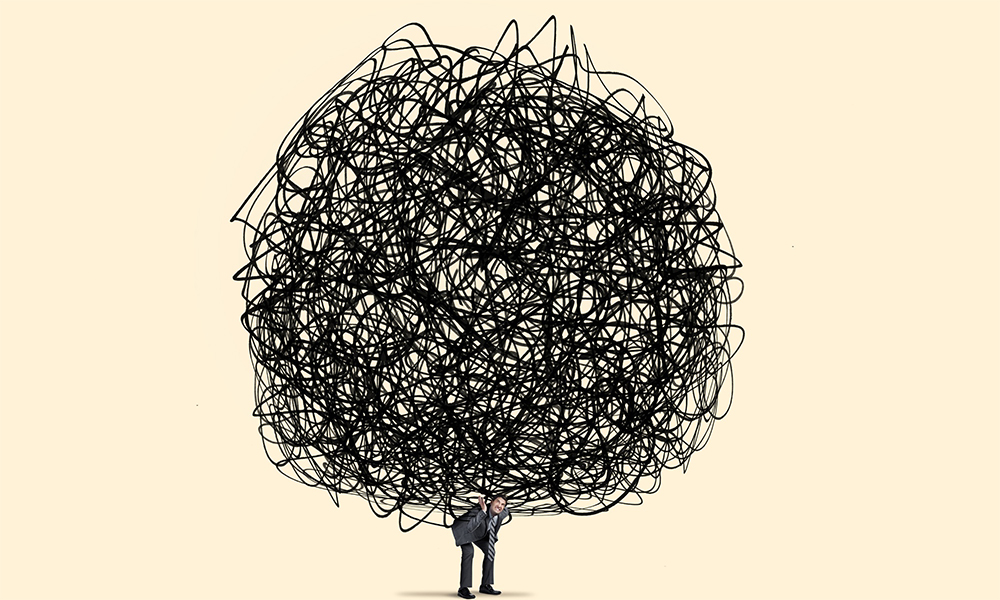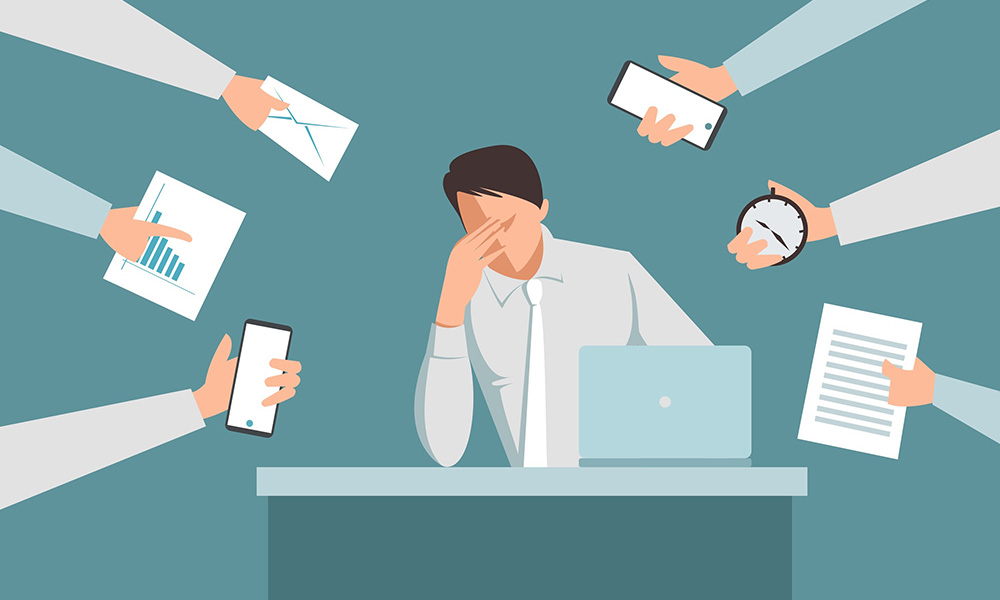We all know the increasing importance of resilience, the ability to recover and bounce back. As Harvard Business School professor, Rosabeth Moss Canter puts it, resilience is no longer a good-to-have skill; in today’s world, it is a must-have, crucial to survival and success.
Yet, resilience is hard. Author Steven Synder says it well, “[Resilience] requires the courage to confront painful realities, the faith that there will be a solution when one isn’t immediately evident, and the tenacity to carry on despite a nagging gut feeling that the situation is hopeless”.
I recently read a great book, Micro-Resilience: Minor Shifts for Major Boosts in Focus, Drive and Energy, written by the husband-and-wife team of Bonnie St. John and Allen P. Haines. Bonnie lost her leg at the age of five and came from an extremely troubled home—in spite of these hurdles, she went on to become a Rhodes scholar and an Olympic athlete. Her husband, Allen had a successful 25-year-long career in Hollywood, as the CEO of several successful organisations.
Borrowing from this, my message this week is on micro-resilience. It focuses on the ideas from their book about the little things you can do to create the instant resilience needed every day.
To build micro-resilience, you can look at building five practices suggested by the authors:
1. Refocus your brain
While the nature of work has changed dramatically over the last couple of centuries, our brains haven’t had a chance to catch up. Today’s professional challenges demand abstract thinking and people skills—as well as the ability to deal with the overwhelming information and constant connectivity that come with the Internet. At any given time, you are balancing a number of mental tasks. All this adds up to an overloaded brain that feels tired, struggles to focus, and becomes reactive. You think you are winning the battle by constantly multitasking, but this can actually work against you: constantly switching gears requires extra brainpower, increases the time needed to complete tasks (by up to 40 per cent according to some studies), and heightens the risk of serious mistakes.
Here are a few suggestions for more efficient use of your brainpower:
- Focus zones: Create zones of focused effort in your day (like an “island in the stream”) to tackle tasks that require maximum accuracy and creativity. A focus zone can be a place, like a quiet corner in the office, or a time period, during which you block off all interruptions. Communication is key here: explain what you are trying to achieve to your team and establish a way for them to know when you’re in the focus zone. For example, when your door is closed or you’re wearing headphones or any other signal you like. During this time, they should only approach you with urgent matters; everything else can wait a couple of hours. It’s also important for leaders to return this courtesy. If you see your team members immersed deeply in a task, don’t interrupt them to ask an inconsequential question. Yes, it’s difficult to curb the instinct: after all, they are sitting right there and you just want to know one little thing! But if you expect them to respect your boundaries, you must do the same for them.
- Take notes: Whether at a meeting or during an important conversation, the age-old practice of taking notes conserves your mental energy, allows creativity to flourish, and supports memory-making. These notes don’t need to be preserved—the very act of writing things down and using them as a reference during the interaction is enough for the advantages to kick in. So, to keep brain fatigue at bay, bring back the humble personal diary. In group discussions, use whiteboards or flip-charts to map thinking and decisions.
- Time your decisions: Did you know that doctors tend to overprescribe antibiotics towards the end of the day? Making a large number of decisions in succession leads to severe mental fatigue—which compromises the quality of later decisions. To combat this tendency, make key decisions early in the day or just after recharging your batteries. Ensure the same for your team: instead of pushing through a crucial decision when everyone is waiting to have lunch, reconvene later when people are refreshed.
2. Reset your primitive alarms
Our brains are hardwired to react very strongly to any sort of threat. This is an evolutionary instinct: in prehistoric times, an instant fight-or-flight response was critical to survival. But today, you need more sophisticated skills to deal with everyday challenges. Allowing anger or panic to take over spikes your stress level and causes you to say or do things you later regret. At other times, the “threat” might not even be real—your brain jumps to conclusions and goes straight into catastrophe mode.
Here are a few ways to prevent this brain hijack:
- Deep breathing: While deep breathing is an often-suggested method of calming down, it’s important to get it right—because shallow breathing from the chest can actually worsen stress. To find your natural breathing rhythm, you must engage the abdomen: sit comfortably, relax your shoulders and chest, and then take deep breaths that expand your belly. Just a few minutes of this technique, done correctly, balances your nervous system and relaxes the mind.
- Smells and bells: Science has shown that certain fragrances have a powerful impact on your emotional state and can stop the brain hijack in its tracks. Is there a scent that sparks feelings of positivity in you? It may be from your childhood, or associated with a pleasant memory. Keep this aroma at hand and turn to it during high-stress situations.
3. Reframe your attitude
It’s easy to get stuck in a spiral of pessimism. This tendency, too, is a hand-me-down from our ancestors, who were primed to respond far more intensely towards negative stimuli in a bid for survival. Thus, the primal part of your brain focuses more on negativity than positivity, which can make your world seem dark, ruthless, and unhappy. A more optimistic attitude, meanwhile, enhances creativity, interpersonal relationships, and productivity. Here are a few ways to pull yourself out of that negativity rut:
- Dispute your beliefs: To help you see things from a different angle, the authors suggest the ABCDE approach – A: identify the Adverse event, B: clarify your Beliefs about it, C: list the Consequences based on those beliefs, D: Dispute your beliefs and consider the event in a new light, E: Energise the new belief by taking action. The consequences of a problematic situation aren’t inevitable—they are usually based on your pre-existing beliefs. By creating a new perspective and acting on it, you can actually change the outcome. Remember, it’s tough to challenge deeply-held views, so be patient with yourself and invite others to help you talk through the issue.
- Reversi: This simple activity is a useful way of forcing yourself to look at new options. On a sheet of paper, write down an obstacle that’s holding you back. Now, on the other side of the paper, write the opposite statement. (For example, if the obstacle is “I don’t have the time to mentor others”, you would flip it to “I do have the time to mentor others”.) Try to support the positive statement with evidence; you could also ask trusted colleagues to join in the discussion. When you start out with a positive premise, the ideas and possibilities that emerge can be eye-opening.
4. Refresh your body
The connection between physical health, mental efficiency, and emotional well-being is well-documented. And first on the list of micro-methods to a healthier, more productive lifestyle is hydration. On an extra-stressful day, you may forget to have water altogether—but this is when you need it the most. Dehydration impairs your cognitive processes and creates brain fog, whereas adequate water intake sharpens your faculties, decreases response time, and boosts short-term memory. Staying hydrated is also essential to your overall efforts towards micro-resilience—without it, the earlier strategies are unlikely to produce the desired impact. Keep a bottle of water at your desk at all times (set regular hydration reminders on your smartphone if you like) and make it a habit to drink generous amounts of water during the most challenging portion of your workday.
5. Renew your spirit
The final framework of micro-resilience is the toughest. The main idea is to find your overall purpose, and then tap its power in small ways.
First, examine your values and goals in an in-depth manner to come up with what gives your life joy and meaning; then, create a prioritised list of goals. (The book offers detailed guidance on how to go about this.) You can then use these findings to recharge your spirit on a daily basis.
Once your purpose and priorities are clear, make them visible for ongoing micro-renewal: a screensaver, a decorative item, a vision board, a symbol… whatever speaks to you and fills you with inspiration. You can also tailor your schedule to be more aligned with your newly-identified purpose.
Try to eliminate at least one item on your weekly calendar that does nothing to renew your spirit; instead, spend that time doing something you love. Even an hour of two can go a long way towards creating authenticity and purposefulness—which are integral to day-to-day resilience.
I hope you find some of these perspectives and suggestions helpful. Look forward to your thoughts.








Thanks for sharing.
Very well written. Many a times we go through these phases and struggle to see a way out. All recommendations are simple and very doable.
Great read!
Nice article thanks for sharing with us.